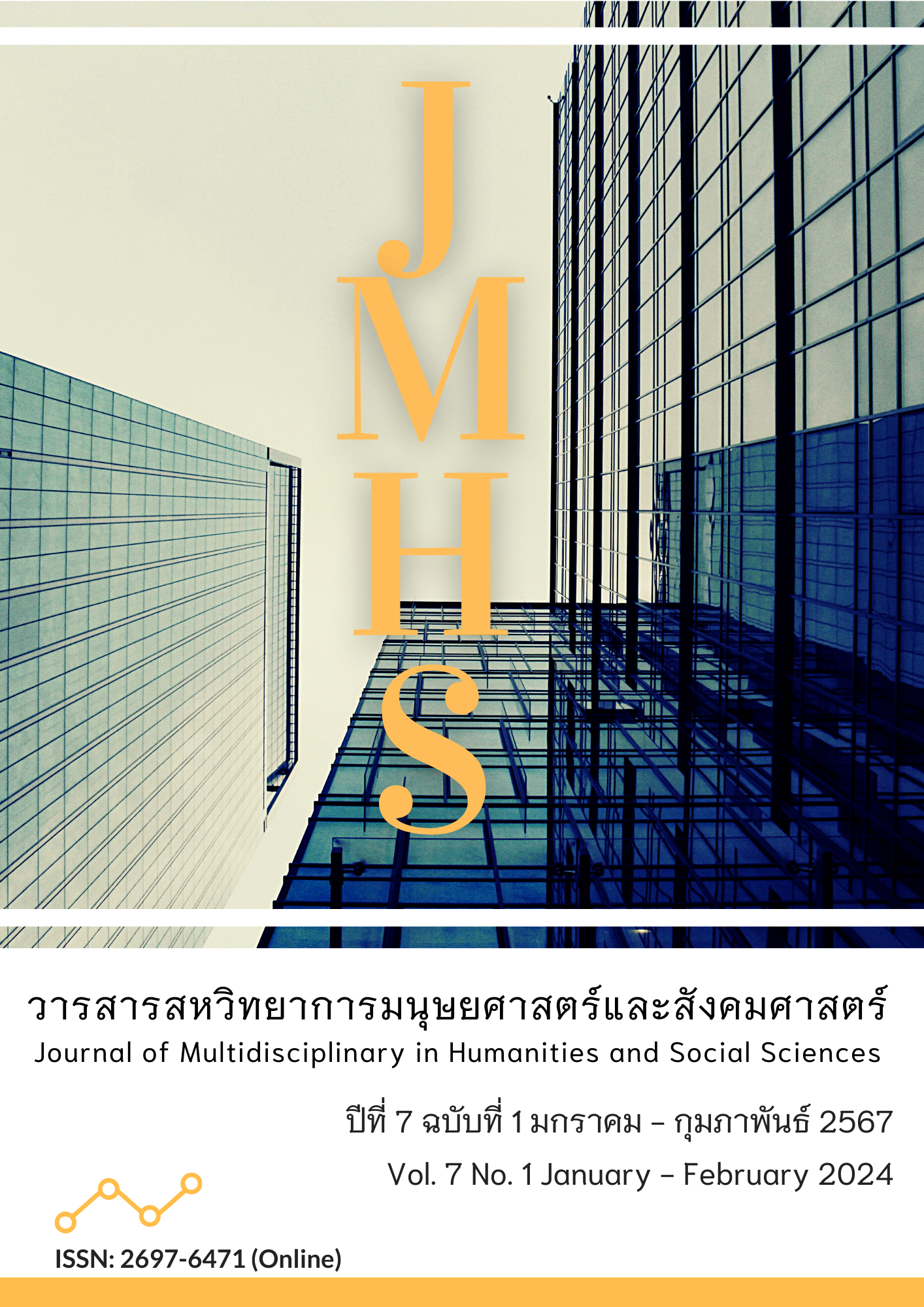The Recyclable Waste Management of Urban Communities of Maha Sarakham Municipality and Related Areas
Main Article Content
Abstract
This article aimed at 1) investigating the recyclable waste management model and the stakeholders involved; 2) analyzing the cycle of recyclable waste management in the municipality and related areas; and 3) providing recommendations for an integrated management method involving local authorities, government, community, and the private sector. The study employed in-depth interviewing as its primary research method and involved two main participant groups: an informal sample group comprising individuals from local communities and a formal group consisting of businesses engaged in purchasing recyclable waste. The research methodology encompassed four key steps: Step 1: Classification of Recyclable Wastes and Methods. Step 2: Interviewing Selected Sample Groups. Step 3: Construction of a Recyclable Waste Management Cycle Chart. Step 4: Recommendations for Integration. The findings from this research revealed a lack of connection within the waste management process, emphasizing the need for a more cohesive and interconnected system. It underscored the importance of designing a management model that aligns with the concepts of circular economy and symbiosis within the waste management ecosystem, aiming for more sustainable waste practices. Moreover, this article contributed to a broader study on The Study of Community Waste Flow Management through the Urban Symbiosis Concept of Sustainable Waste Management: The Case Study of Maha Sarakham Municipality. The study was part of a larger research initiative supported by funding from the Thailand Research Fund, specifically the Office of Thailand Science Research and Innovation Promotion Council (TSRI), in 2019. This funding indicates the significance and support for research endeavors addressing waste management and sustainability in the country.
Article Details

This work is licensed under a Creative Commons Attribution-NonCommercial-NoDerivatives 4.0 International License.
Views and opinions appearing in the Journal it is the responsibility of the author of the article, and does not constitute the view and responsibility of the editorial team.
References
Albino, V., Fraccascia, L., & Savino, T. (2015). Industrial Symbiosis for A Sustainable City: Technical, Economical and Organizational Issues. Procedia Engineering, (118), 950-957. https://doi.org/10.1016/j.jclepro.2019.01.091
Chertow, M. R. (2007). “Uncovering” Industrial Symbiosis. Journal of Industrial Ecology, 11(1), 11-30. https://doi.org/10.1162/jiec.2007.1110
Department of Pollution Control. (2008). Manual for Old Item Buyers: Good Practices to Prevent Environmental Impact for Old Item Buying Shops. Bangkok: Ekkachai Offset Partnership Limited.
Department of Pollution Control. (2021). Report on Thailand Pollution Situation, 2021. Bangkok: Style Creative House.
Loizidou, M. (2015). Waste Management and Symbiosis for Waste Valorization. Waste and Biomass Valor, 6(5), 623-624. https://doi.org/10.1007/s12649-015-9432-x.
National Reform Council. (2016). Reforming the Law and the Country's Solid Waste Management System. Recommendations for Driving National Reform under Article 31 of the Constitution of the Kingdom of Thailand. Retrieved from https://www.parliament.go.th/ewtadmin/ewt/parliament_parcy/download/usergroup_disaster/8-14.pdf
Sripokhangkul, S., & Aj-Sri, L. (2017). Sold Waste Management in Mueng Maha Sarakham Municipality, Maha Sarakham Province. Journal of MCU Social Science Review, 6(2-5), 25-36.
Thai Civil Rights and Investigative Journalism (TCIJ). (November 12, 2014). Law on Old Item Trading. Retrieved from https://www.tcijthai.com/news/2014/12/watch/5079
Van Berkel, R., Fujita, T., Hashimoto, S., & Geng, Y. (2009). Industrial and Urban Symbiosis in Japan: Analysis of The Eco-Town. Journal of Environmental Management, 90(3), 1544-1556. https://doi.org/10.1016/j.jenvman.2008.11.010


